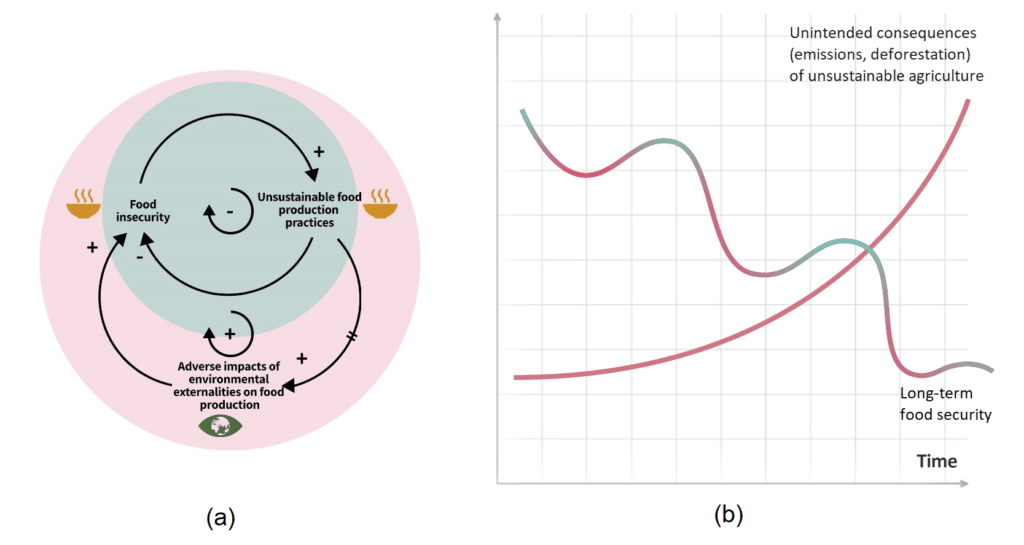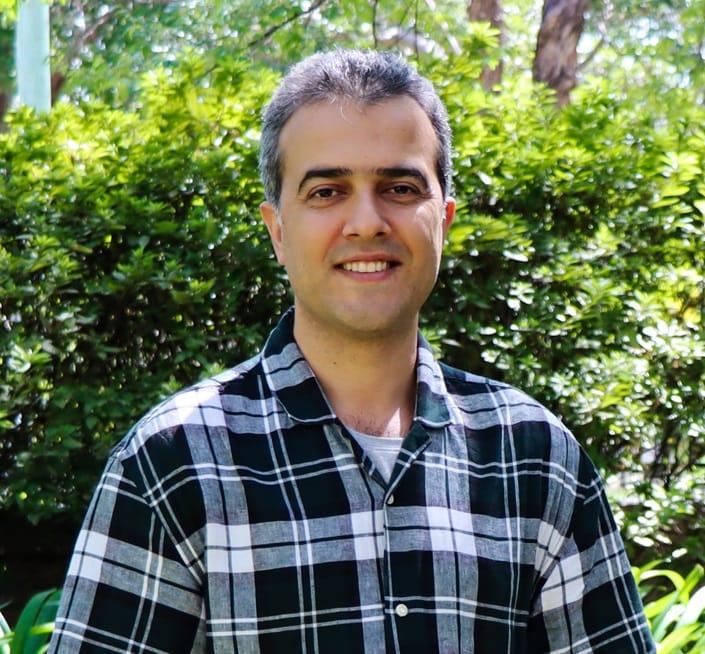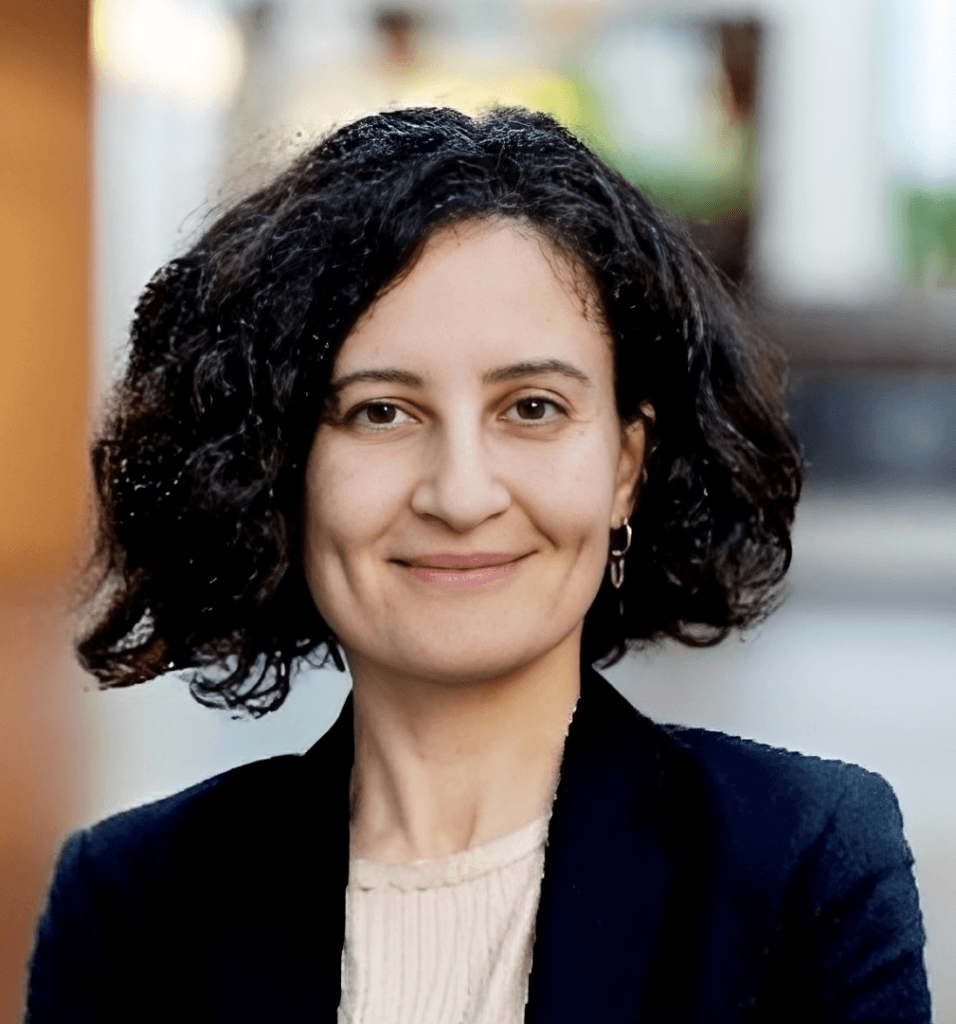This blog, summarising one of my recently published papers, explores the use of systems archetypes as a practical tool for analysing the synergies and trade-offs among Sustainable Development Goals (SDGs). Eight common archetypes are used to represent different dynamics and policy implications in achieving sustainable development. The archetypes provide valuable insights for decision-making processes, helping to minimize trade-offs and maximize synergies across the SDGs for a more sustainable future.
Sustainable Development
Sustainable development is a complex endeavour that involves addressing a wide range of interconnected goals, such as poverty alleviation, food security, well-being, water management, energy transition, housing, climate action, and land use. The interplay and trade-offs between these goals can pose significant challenges for policymakers and practitioners striving to achieve sustainable outcomes. To better understand the underlying dynamics and potential pitfalls in pursuing sustainable development, systems archetypes offer a valuable tool grounded in systems thinking and modelling.
In recent years, there has been a growing recognition of the importance of comprehending the interconnections between Sustainable Development Goals (SDGs). Decision-makers place greater emphasis on simplicity, flexibility, and understandability when it comes to analysing SDG interactions, rather than being overly concerned with accuracy and precision. Here, systems archetypes serve as a qualitative method to go beyond simply identifying correlations between Sustainable Development Goals (SDGs) and instead focus on understanding the causal relationships between them. These archetypes allow for the conceptualization of how actions taken towards one goal can either hinder or promote the progress of other goals.
Eight Common Systems Archetypes
Systems archetypes are recurring patterns of generic system structures found in various organizations, circumstances, and scales. They comprise distinctive combinations of reinforcing and balancing processes that shape the behaviour of complex systems. By studying these archetypes, we can gain insights into causal drivers, expected dynamic behaviour, and policy implications associated with addressing complex problems. There are eight commonly recognized archetypes, each with its own set of underlying causal drivers, expected dynamic behaviour, and policy implications:
- Fixes That Fail: This archetype describes a situation where a quick solution is implemented to address a problem, but it only provides temporary relief and fails to address the underlying causes. The problem eventually resurfaces, often in a worse form, requiring another fix.
- Band-Aid Solutions: Similar to “Fixes That Fail,” this archetype refers to the tendency to apply temporary, superficial solutions to complex problems. These solutions may offer short-term benefits but do not address the root causes, leading to recurring issues that require continuous patching instead of long-term resolution.
- Eroding Ambitions: In this archetype, an organization or system gradually lowers its goals or aspirations over time due to various constraints or setbacks. As a result, the system’s overall performance declines, and it becomes increasingly difficult to achieve ambitious objectives.
- Downplayed Problems: This archetype involves the tendency to downplay or ignore emerging problems or early warning signs. Decision-makers may underestimate the significance of these issues, leading to delayed or inadequate responses, which can ultimately result in more severe consequences.
- Escalating Tensions: This archetype describes a situation where conflicts or tensions between different elements of a system escalate over time. As tensions build up, the interactions between these elements become increasingly strained, leading to a deteriorating system condition and potential breakdown.
- Success to the Successful: This archetype depicts a scenario where those who are already successful or have an advantage are more likely to receive additional benefits or opportunities, reinforcing their success. This dynamic can create a feedback loop that widens the gap between the successful and the less privileged, exacerbating inequality.
- Limits to Progress: This archetype refers to the idea that progress in a system or organization eventually slows down or reaches a plateau. Despite efforts to improve, the system encounters inherent limitations, diminishing returns, or constraints that prevent further advancement.
- The Tragedy of the Commons: This archetype describes a situation where a shared resource, such as a common grazing area or a global ecosystem, is exploited by individuals for their own benefit without considering the long-term consequences. The overuse or depletion of the resource leads to a detrimental outcome for everyone involved.

Let’s learn Systems Modelling together!
I share useful information about Systems Modelling here weekly.
Systems Archetypes and Sustainable Development Goals
To better understand the complexity of sustainable development, the application of these archetypes provides a systematic lens through which to explore the interactions between different SDGs (see the table below). By using causal loop diagrams, which depict feedback relationships among system elements, we can visualize the dynamics at play.
| Causal Driver | Interaction archetype | Description | Dynamic behaviour |
|---|---|---|---|
| Unanticipated side-effect | Fixes That Fail | SDG interventions end up with opposite effects due to delayed trade-offs with other goals | Slowing progress despite increasing efforts |
| Unanticipated side-effect | Band-Aid Solutions | Band-aid solutions with short-term moderate impacts diminish the need for transformative SDG interventions | Slowing progress due to the declining presence of long-term interventions |
| Time-delayed response | Eroding Ambitions | Long-term interventions with time-delayed responses create uncertainty about SDG achievement and justify lower ambition | Increasing progress, but towards low-ambition goals that can be easily achieved |
| Time-delayed response | Downplayed Problems | The ignorance of trade-offs which are seemingly insignificant due to their time-delayed response but will eventually overshadow all synergistic interactions and can halt or reverse progress | Initial progress due to synergistic interactions, followed by rapid decline from the prevailing effects of downplayed trade-offs |
| Path dependency | Escalating Tensions | Increasing temporary interventions with path dependency results in unsatisfactory progress in conflicting goals | An overall decline in progress in all goals, despite increasing efforts |
| Path dependency | Success to the Successful | Resources are diverted towards goals with historically better performance and away from other more challenging and interacting goals which reduce progress | Increasing trade-offs between conflicting goals with accumulating progress towards one goal at the cost of declining progress towards others |
| Limiting condition effect | Limits to Progress. | Interventions reliant on exhaustible resources can produce diminishing returns over time as resources reach their limit | Progress stabilises or declines despite increasing efforts |
| Limiting condition effect | Tragedy of the Commons | Pursuing goals in isolation by actors interested in only a specific sector can exhaust common resources and lead to an overall unsustainable outcome for all | Increasing progress in one goal, at the cost of declining progress in other goals and an overall unbalanced achievement |
The Fixes that Fail archetype
For example, the Fixes That Fail archetype can be depicted using a causal loop diagram. Let’s consider a hypothetical scenario in the context of food and agriculture, which encompasses SDGs 2 (Food Security) and 13 (Climate Action). Suppose the goal of addressing food insecurity is achieved by boosting food production through unsustainable practices like agricultural land expansion and excessive fertilizer use.
In the causal loop diagram, a positive relationship (positive polarity) is established between food production and food security, indicating that an increase in food production leads to improved food security. However, there is a negative relationship (negative polarity) between agricultural practices and climate change. Unsustainable practices contribute to climate change, which negatively affects food security in the long run.
This diagram illustrates a reinforcing feedback loop where increased food production temporarily improves food security, but the adverse environmental impacts eventually undermine food security, creating a vicious cycle. To address this archetype, policymakers need to consider both the short-term improvements and the long-term consequences, implementing measures that promote sustainable agricultural practices to mitigate climate change risks.

CAPTION: Figure (a) on the left shows the casual drivers and figure (b) on the right shows the matching (colour-coded) dynamic behaviours in a hypothetical example concerning food insecurity that demonstrates the Fixes That Fail systems archetype. (Source: Moallemi et al., 2022)
Conclusion
Because of their simple concepts, archetypes can be a useful tool for non-expert policymakers and resource-constrained organisations who do not have access to or capability for running complex models to understand SDG interactions and know intervention points.
By utilizing systems archetypes, policymakers and stakeholders can gain a more comprehensive understanding of the complex interactions between sustainable development goals. These archetypes provide valuable insights into the potential unintended consequences of interventions and help inform decision-making processes. By anticipating the dynamics associated with each archetype, policymakers can develop robust strategies that minimize trade-offs and maximize synergies across SDGs, fostering a more sustainable and resilient future.
Learn more:
Moallemi, E. A., Hosseini, S. H., Eker, S., Gao, L., Bertone, E., Szetey, K., & Bryan, B. A. (2022). Eight archetypes of Sustainable Development Goal (SDG) synergies and trade-offs. Earth’s Future, 10, e2022EF002873.
The paper explains the causal loop diagrams associated with each systems archetype. It also includes hypothetical and real-life illustrations that demonstrate the interactions, both positive and negative, among various Sustainable Development Goals (SDGs), highlighting the synergies and trade-offs that exist between them.
You can also read the published i2insights articleHERE.
P.S. I benefited from AI technology to write this blog and enhance the quality of the content.
Authors

Dr Hossein Hosseini is an early career researcher for the Brain and Mind Centre at the University of Sydney. His research is focused on systems modelling approaches to analyse complex socio-technical problems. In particular, his current research is concentrated on mental health policy analysis via a System Dynamics modelling effort in which simulation models are developed through a participatory approach to understand the drivers of mental health system change and to explore system transitions to the future in Australia. He received his PhD in Industrial Engineering (socio-economic systems engineering) in 2016 with a focus on systems modelling and model-based policy analysis from The University of Tehran. During the past years, he has used systems modelling (especially System Dynamics simulation) in theory, technique, and application through several projects in academia, industry and the public sector. He uses interdisciplinary and participatory approaches to inform policy interventions that can help achieve targets under future scenarios.

Dr Enayat Moallemi is a principal research scientist in sustainability transitions at CSIRO. He received his PhD in Environmental Science in 2017 from The University of Melbourne. He uses modelling tools and knowledge co-production methods to design and evaluate decisions for sustainability transitions in an uncertain future. His research approaches include a holistic view of system interactions and multi-sector dynamics between societal (poverty, equity) and environmental (energy, climate, food and land) domains, framed by the Sustainable Development Goals (SDGs). He designs his research methodology using a range of knowledge sources and methods often from Decision-Making Under Deep Uncertainty, Multi-Sector Dynamics, System Dynamics, and Integrated Assessment Modelling.

Katrina is a postdoctoral fellow with CSIRO in the Valuing Sustainability Future Science Platform and part of the Future States project which seeks to predict future change in Australian socioecological landscapes with a state-and-transition model framework. Her PhD work at Deakin University looked at local scale sustainability in the context of the UN Sustainable Development Goals, using co-production methods for scenario modelling. Prior to becoming a full-time researcher, Katrina’s work history stretched from bookkeeping to being a professional musician, which has stood her in good stead for her transdisciplinary research. She volunteers for the charity Migraine Australia and is an advocate for people who live with migraine. She lives in Canberra with her partner and two Burmese cats, and spends her free time doing all manner of textile crafts and enjoying science fiction.

Dr. Edoardo Bertone is a senior lecturer with the School of Engineering & Built Environment, and a member of Cities Research Institute and Australian Rivers Institute, Griffith University. He holds Bachelor’s and Master’s degrees in Civil Engineering from the Polytechnic University of Turin (Italy) and a PhD in Water Resources Engineering from Griffith. He has a research focus on data-driven modelling, Bayesian Network and System Dynamics modelling applied to the water resources management, water-energy nexus, environmental health, sustainability and climate change adaptation fields.

Dr Sibel Eker is currently an Assistant Professor at Radboud University, Nijmegen School of Management and a Research Scholar at the International Institute for Applied Systems Analysis (IIASA) in Austria. Her interdisciplinary research profile combines systems analysis and engineering, decision sciences and social sciences, and her work brings systems thinking and uncertainty focus to climate change and sustainability problems with model-based approaches. Her current research interests center around the drivers and implications of demand-side climate change mitigation, sustainable diets, and co-production of mitigation and sustainability scenarios through simple integrated assessment models.